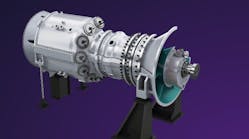Cleveland-Cliffs, one of the top five steel producers in the United States, is going to decarbonize its Middletown Works facility in Ohio by replacing a blast furnace with electrification and efficiency upgrades.
Cliffs was selected for award negotiations for up to $500 million in total funding from the Department of Energy (DOE) towards the replacement of its Middletown blast furnace with a Direct Reduced Iron (DRI) Plant and two electric melting furnaces. The company is in negotiations with the DOE related to the award-specific terms and conditions and is confident about receiving final approvals and proceeding with this project.
Upon receiving the award, the company will replace its existing blast furnace at its Middletown facility in Middletown, Ohio with a 2.5 mtpa (metric ton per year) hydrogen-ready DRI plant and two 120-MW electric melting furnaces to feed molten iron to the existing infrastructure on site, including the BOF, Caster, Hot Strip Mill, and various finishing facilities.
Middletown will maintain its existing raw steel production capacity of approximately 3 million net tons per year and will not use coke for iron production. The plant is located in southwest Ohio between Cincinnati and Dayton.
The process will not only reduce carbon emissions intensity but also consolidate Middletown Works as the most advanced, lowest GHG emitting integrated iron and steel facility in the world. The facility will be fueled by natural gas, which will help reduce current ironmaking carbon intensity by over 50 percent; a mix of natural gas and clean hydrogen; or clean hydrogen, which will reduce current ironmaking carbon intensity by over 90 percent.
The new facility is expected to reduce production costs by approximately $150 per net ton of liquid steel produced, or a $450 million annual savings relative to the existing configuration. The savings do not consider any of the premiums expected to be generated from sales of low-carbon steel, such as Cliffs H2 and Cliffs HMAX.
The investment will secure 2,500 jobs at Middletown Works, where the unionized workforce is represented by the International Association of Machinists (IAM). While the flex-fuel DRI plant and EMFs will require 170 additional jobs, the project will result in 1,200 building trades jobs during peak construction.
The project will utilize Cleveland-Cliffs’ United Steelworkers (USW) represented iron ore mining and pelletizing units. The new configuration avoids the use of prime scrap metal, which the company predicts to become shorter in supply and higher in cost throughout the rest of the decade.
The process will allow Cleveland-Cliffs to maintain the quality of the steel produced, which is otherwise degraded with increased scrap usage, maintaining its position in the automotive end market.
The net capital outlay for Cliffs will be approximately $1.3 billion, net of capital avoidance on the existing blast furnace and coke plants, over a 5-year period primarily starting in 2025 and expected to end by 2029. Cliffs’ portion will be funded using liquidity on hand and its own free cash flow generation.
The site offers enough space to construct the new facility without hindering the existing processes, thus reducing interference risks during the construction and commissioning phase.
Cleveland-Cliffs has been trying decarbonization strategies at Middletown Works for several years. It recently piloted injection of hydrogen into a blast furnace.
"Cleveland-Cliffs thrives on innovation, so it was fitting that this major step was completed just a short distance from our Cliffs Research and Innovation Center in Middletown," CEO and Chairman Lourenco Goncalves said in a statement after the May 2023 pilot.
The steel produced at Middletown serves the automotive, appliance, HVAC, culvert and distribution markets.
Track Many Paths to Net Zero in the C&I Energy Transition
Subscribe to EnergyTech's Free E-Newsletter





